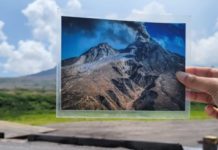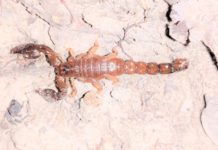THE CULTURAL IMPORTANCE OF THE CRAPAUD TO THE COMMONWEALTH OF DOMINICA

Various species of animal wildlife have featured as important components in the cultural heritage of many countries all over the world. Some of these species are very iconic and have been elevated to the status of national emblems, flagship species, or have been included in the design of other national emblems.
Two of Dominica’s wildlife species that feature prominently in our cultural heritage are the Sisserou Parrot (Amazona imperialis) (which has been popularly accepted as Dominica’s National Bird, featuring on the country’s national flag and Coat-of-Arms), and the Crapaud or Mountain Chicken (Leptodactylus fallax) – the world’s second largest species of frog.
Amphibians have been playing an important role in the cultural heritage of many countries, and have featured in oral traditions and have also inspired drawings, paintings, sculptures and other works of art.
The Crapaud is culturally important to the Commonwealth of Dominica, and once held the “title” of the country’s national dish. The frog got its other name Mountain Chicken because its meat tastes like chicken; the meat was traditionally served in soups or as fried legs. An outbreak of the Chytrid fungus disease among Dominica’s Crapaud population from around 2002 has resulted in a sharp decline in the population, followed by outlawing hunting of the frog.
The Mountain Chicken also features on one of Dominica’s national emblems, as a Crapaud “sits” prominently in the second (upper-right) quarter of the country’s Coat-of-Arms.
It is clear that over the years the Crapaud became popular and highly recognised by Dominicans to the point that the frog has been used in the logo designs of two important indigenous institutions: the National Bank of Dominica (once affectionately referred to as the “Crapaud Bank” because of the institution’s logo) and the Dominica State College.
Dominicans speak a second language called Creole which was widely used by our fore-fathers. Presently Creole is still widely spoken in different areas around Dominica, and some of our Creole oral traditions (folk tales, proverbs and jokes) make reference to the Crapaud. One of the local Creole proverbs that “feature” the Crapaud is, “Kwapo di sé mannyè i asiz ki fè tout fanm enmen’y”, which translates to “Crapaud says that it’s because of the way he sits that’s why all women love him)”. Another Dominican Creole proverb is, “Sé lanng kwapo ki twayi kwapo” meaning, “It’s Crapaud’s tongue (croaking) that sold him out”.
The Crapaud is also mentioned in the lyrics of at least two Dominican folk songs (“Oh Dominica” and “Tou Sa Adan’y”) which were sung by the Siffleur Montagne Chorale of the 1970s: “…Of your birds and Crapaud….” and “Lè kwapo ka hélé lannwit” (translates to “When Crapauds are calling at nights”).
Sometimes Dominicans make reference to certain things about the Crapaud, in describing parts of the human anatomy of another person, such as “Djèl-ou plat kon djèl kwapo” which translates to “Your lips are as “flat” as those of a Crapaud” and “Bonda’w plat kon bonda kwapo”, meaning, “Your butt are as ‘flat’ as those of a Crapaud”. Also, comparing human activity to that of a Crapaud, one may hear “Ou ka asid kon kwapo” meaning “You are sitting like a crapaud)”.
There is also a popular local belief that if a Crapaud would urinate in a person’s eyes, that that person would go blind, and there are many tales of boa constrictors that attempted to swallow Crapauds head-first, but the frogs would exhale into the snake until the snake became inflated and died.
This special frog, the Crapaud, is now endangered and should not be hunted or eaten. I would like my fellow men and women of our beautiful country to help protect this endangered frog species, this national icon, from becoming extinct so that it may remain in our history books, culture and logos, and in our paintings, drawings, sculptures and folk tales. Let’s all join hands to save our Crapaud.
– Machel Sulton, Forest Trainee/Amphibian Technician (Forestry, Wildlife & Parks Division, Dominica)






